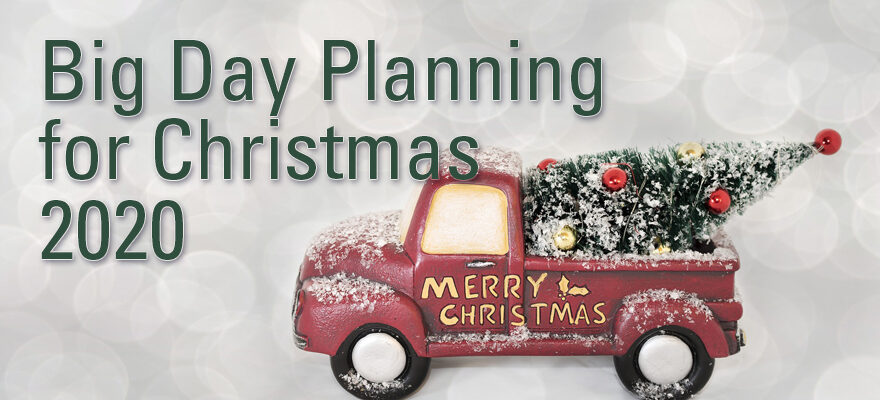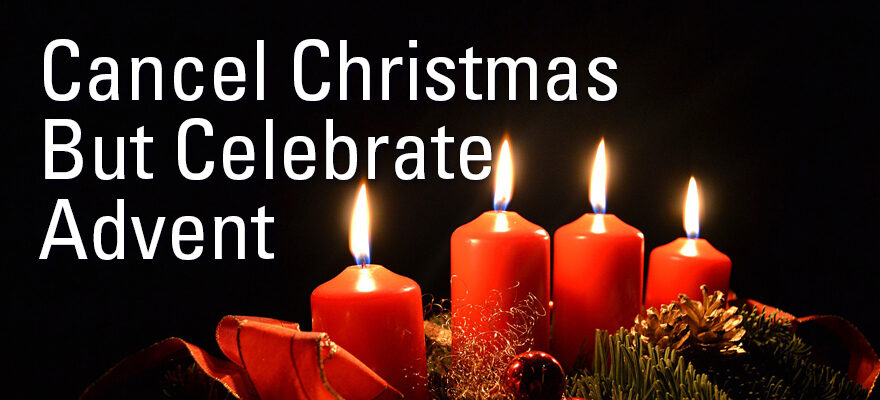by Franklin Dumond, Director of Congregational Ministries
The principles described here are designed around planning for a Big Day. The Big Day concept has been utilized for some time now as a means to focus the energy of a congregation around a specific day. By planning at least two but no more than four of these days in a “normal” year the evangelistic efforts of the church may be channeled into specific, intentional outreach.
As the church reconfigures outreach in the new normal efforts must be made to reconnect to our communities in a safe, effective fashion.
- Start Early!
Thanksgiving comes on Thursday, November 26 and Christmas will arrive on, December 25, 2020.
How long will it take to prepare for the worship events you will schedule around Christmas?
Advent will begin Sunday, November 29, 2020. Three Sundays in December will precede Christmas. What will you do on December 6? December 13? December 20?
When do you need to start gathering resources?
When will Christmas decor show up on stage and around the building?
Should our Big Day be early in December so we might gain return visits from guests? - Add a Special Feature or a Special Service.
How many people are usually involved in leading worship on a given Sunday? Add a special feature where more people can be involved in meaningful participation and watch the visitors arrive…especially if you use the Children’s Choir and its members rehearse for a few weeks in advance!
Children’s programming is especially popular at Christmas, but even adults can master simple drama and pantomime.
Other special services might be scheduled on Christmas Eve.
Many churches find that Christmas Eve-Eve (i.e.—December 23) works well for them.
Customize your schedule to your local context. - Develop specialized promotion.
How will everyone know of the special day if you don’t tell them? How will they realize what’s going on if they only hear it once?
Newspaper ads and yellow pages listings do little to attract the unchurched. Consider a saturation mailing. You can develop your own material, but you may want to bring in the professionals for the first time or two. Check out www.outreach.com or thumb through Outreach Magazine for suggestions. If you use this plan be sure to include the cost of both the promotion package and the postage to send the cards. The good folks at Stinson Press can also help you with similar services to blanket your area with special invitations.
Equip your folks with an Invite Card that carries your theme graphic and an invitation to your services. Be sure service times, locations, and other pertinent information is included. Emphasize that everything will be done with safety in mind.- Keep in mind, however, that if you invite them you’ll want to be able to offer what you’ve promised. Make it a special day. Clean off the coat rack. Pick up the clutter. Dust the corners. Company’s comin’! Make your worship service user friendly: keep the prayer list short and focused, eliminate any announcement that does not directly impact at least half of the people present (remember small group promotion needs to be done in the small group, not in the large group setting), start on time, eliminate the dead time in the service, preach a positive message of hope and resurrection!
- Use the power of focus. Concentrate your effort.
- Focus on the family connection. Research continues to show that the most effective network we have to reach people is in the family arena (see Thom Rainer’s Surprising Insights from the Unchurched). Develop a list of family members who should be part of your church with the rest of their family. Then be sure someone from the family invites them!
- Focus on recent visitors. What has happened to those visitor cards? What has already been done with and to the folks who have visited in the last six months? Who are they? Where are they attending church now? What do you need to do to get them to attend this Easter? Mother’s Day? 4th of July Weekend? Now you’re getting the picture.
- Focus on the larger congregation. If your church has an average attendance of 50 you probably have at least 100 people who are part of your larger congregation. The larger your church becomes the broader is its larger congregation of folks who attend infrequently but who do attend some. Keep a list for 6-12 weeks of all the folks who attend at least one of your services.
- Focus on increasing the frequency of attendance. If they attend once in 12 weeks, work with them until they attend twice. The unchurched population in America who become churched attend church several times in the year before they come to faith in Christ and become part of His Church!
- Pastors set the pace, but everyone needs to get involved! If you don’t invite then your people will not invite. If you don’t share your faith then your people won’t share their faith. The unchurched who are seeking the church want brief but meaningful contact from the pastor. Develop a system that works in your location.
- Be user friendly! How do we create an environment where people will want to come and hang out in this Covid infected world?
- • Focus on safety. Remind people of social distance measures that are expected and take extra precautions to ensure safety.
- If Communion is included use the pre-packaged elements to reduce person-to-person contact.
- Get ready for company! Encourage your people to “Park in the back. Sit in the front. Move to the middle. Speak to those around you.”

